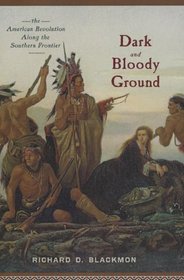Search -
Dark and Bloody Ground: The American Revolution Along the Southern Frontier
Dark and Bloody Ground The American Revolution Along the Southern Frontier
Author:
The Battles along the Rivers, Mountains, and in the Deep Woods of the South that Changed the Fate of Nations — The American Revolution marked a dramatic change in the struggle for land along the southern frontier. In the colonial era, American Indian leaders and British offi cials attempted to accommodate the westward expansion of Anglo-Americans... more »
Author:
The Battles along the Rivers, Mountains, and in the Deep Woods of the South that Changed the Fate of Nations — The American Revolution marked a dramatic change in the struggle for land along the southern frontier. In the colonial era, American Indian leaders and British offi cials attempted to accommodate the westward expansion of Anglo-Americans... more »
ISBN-13: 9781594161896
ISBN-10: 1594161895
Publication Date: 9/19/2013
Edition: 1st Edition
Rating: 1
ISBN-10: 1594161895
Publication Date: 9/19/2013
Edition: 1st Edition
Rating: 1
3 stars, based on 1 rating
Publisher: Westholme Publishing
Book Type: Paperback
Other Versions: Hardcover
Members Wishing: 1
Reviews: Amazon | Write a Review
Book Type: Paperback
Other Versions: Hardcover
Members Wishing: 1
Reviews: Amazon | Write a Review
Genres:
- History >> Americas >> Native American
- History >> Americas >> United States >> Colonial Period
- History >> Americas >> United States >> Revolution & Founding
- History >> Americas >> United States >> State & Local
- History >> Modern (16th-21st Centuries) >> 18th Century




